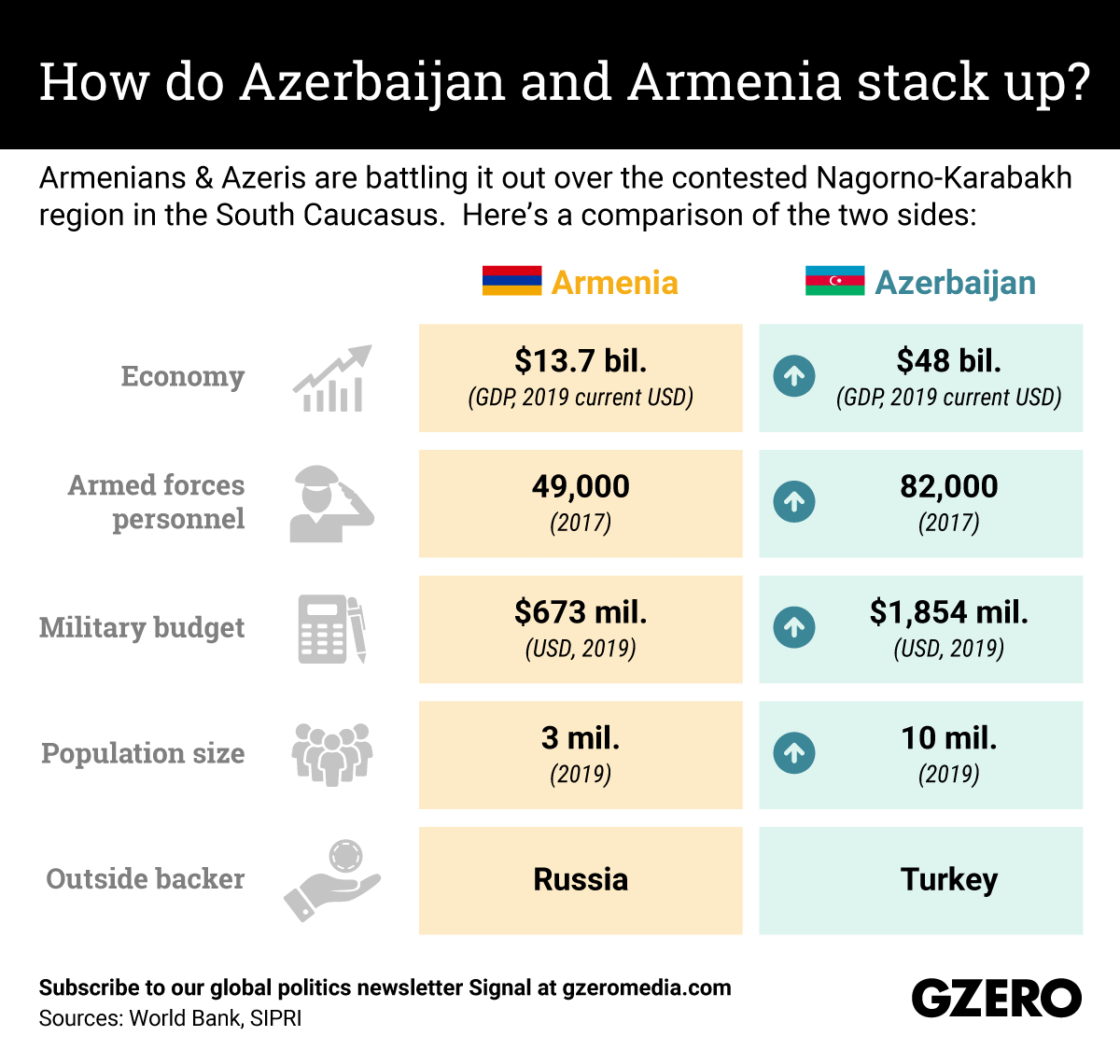October 06, 2020
Heavy fighting between Azeris and Armenians over the contested Nagorno-Karabakh region, which broke out in late September after years of mostly low-level clashes, has intensified in recent days. Nagorno-Karabakh, which is internationally recognized as Azerbaijani territory but controlled by ethnic Armenian separatists, has long been a regional flashpoint: a years-long war between the two sides in the 1990s led to at least 30,000 deaths and displaced more than 1 million people. So how do the two nation states locked in this enduring conflict stack up against the other? We take a look.
From Your Site Articles
- EXCLUSIVE: Biden Administration to officially acknowledge Armenian Genocide - GZERO Media ›
- Biden’s recognition of Armenian genocide: ramifications for Turkey, Armenia & the US - GZERO Media ›
- Biden’s recognition of Armenian genocide: ramifications for Turkey, Armenia & the US - GZERO Media ›
- Armenia and Azerbaijan flareup gets Russia involved - GZERO Media ›
- Special podcast: View from "fully blockaded" Nagorno-Karabakh during Armenia's conflict with Azerbaijan - GZERO Media ›
- Armenia, Azerbaijan & the Nagorno-Karabakh crisis that needs attention - GZERO Media ›
- Canada-India relations strained by murder allegation - GZERO Media ›
More For You
- YouTube
On Ian Explains, Ian Bremmer takes a look at the growing surge in global conflict and the ripple effects of so much violence, war, and armed struggle throughout the world.
Most Popular
Think you know what's going on around the world? Here's your chance to prove it.
French President Emmanuel Macron, German Chancellor Friedrich Merz, Ukrainian President Volodymyr Zelenskiy, U.S. Special Envoy Steve Witkoff and businessman Jared Kushner, along with NATO Secretary-General Mark Rutte and otherEuropean leaders, pose for a group photo at the Chancellery in Berlin, Germany, December 15, 2025.
Kay Nietfeld/Pool via REUTERS
The European Union just pulled off something that, a year ago, seemed politically impossible: it froze $247 billion in Russian central bank assets indefinitely, stripping the Kremlin of one of its most reliable pressure points.
Big global stories. Real conversations with world leaders. Our award-winning global affairs show, GZERO World with Ian Bremmer, goes beyond the headlines on the stories that matter most. Here’s a look back at the 10 most quotable moments from this year’s episodes.
© 2025 GZERO Media. All Rights Reserved | A Eurasia Group media company.
